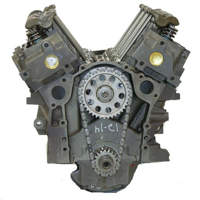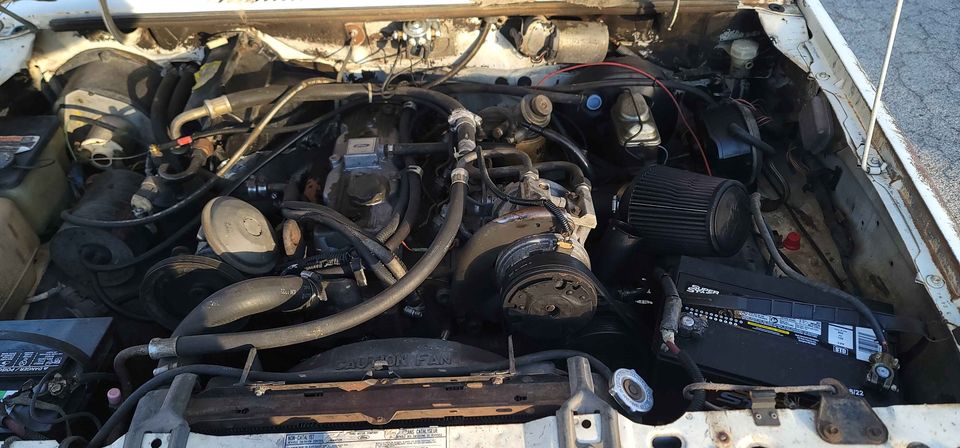Recognizing the Basics of Cars And Truck Engines: Kinds, functions, and features

Review of Car Engines
A vehicle engine offers as the heart of a vehicle, transforming gas right into mechanical power to move it onward. This detailed system comprises different elements that function in unison to make sure optimum performance and performance. The fundamental procedure of an auto engine entails the inner burning procedure, where fuel and air are mixed, ignited, and gotten rid of to develop power.
The engine's layout can dramatically affect its performance, fuel effectiveness, and emissions. Trick parts consist of the cylinder block, pistons, crankshaft, and camshaft, each playing a vital role in the engine's total feature. The cylinder block houses the cyndrical tubes where burning takes place, while the pistons transform the explosive energy from combustion into direct motion. This movement is then transformed into rotational energy by the crankshaft, enabling the automobile's wheels to turn.
Along with these elements, engines often use numerous systems such as gas injection, ignition, and cooling down systems to improve efficiency and durability. Recognizing the standard auto mechanics of cars and truck engines is necessary for doing and detecting problems upkeep, inevitably adding to the lorry's dependability and performance in time.

Sorts Of Automobile Engines
Automobile engines can be categorized right into numerous types based upon their style, gas kind, and operational principles. 2.2 ford ranger engine. The most common classifications consist of inner combustion engines (ICE), electrical engines, and crossbreed engines
Internal burning engines, which can be further separated into gas and diesel engines, operate by igniting a fuel-air blend to create power. Fuel engines are typically lighter and smoother, while diesel engines are much more fuel-efficient and deal higher torque.
Electric engines utilize electrical energy stored in batteries to power an electrical motor, offering immediate torque and absolutely no exhausts during procedure. As innovation advances, electric vehicles (EVs) are progressively coming to be prominent for their ecological advantages and lower running expenses.
Hybrid engines integrate elements of both inner combustion and electric engines, enabling versatile power sources and enhanced fuel performance. They can run in different modes, using either the gas engine, the electric motor, or both simultaneously.
Each sort of engine has distinctive advantages and drawbacks, influencing their application in different car types and market sections, from compact cars and trucks to durable trucks. Understanding these kinds is important for making informed decisions concerning lorry option and performance assumptions.
Engine Functions Discussed
Recognizing engine features is essential for realizing just how vehicles operate efficiently. At the core of any type of interior combustion engine lies the basic process of converting fuel right into mechanical energy. This procedure starts with the intake stroke, where air and gas are attracted into the burning chamber. Following this, the compression stroke presses the air-fuel blend, increasing its temperature level and stress.
The ignition occurs next, sparking the blend and developing a fast expansion of gases. This force drives the piston down throughout the power stroke, which ultimately equates right into the rotational activity of the crankshaft. The exhaust stroke then eliminates the invested gases from the chamber, giving way for a new cycle to commence.
In addition to these key features, engines additionally integrate systems that take care of cooling and lubrication, making sure ideal operational temperatures and reducing rubbing in between moving components. This complex interaction of functions allows the engine to produce the power necessary for lorry propulsion while keeping effectiveness and dependability. Recognizing these functions offers valuable understanding right into the complexities of auto design and enhances the capacity to identify and deal with engine-related concerns effectively.
Trick Engine Functions
Engine style incorporates numerous key features that substantially influence sturdiness, performance, and effectiveness. One of the most important elements is the engine configuration, which includes inline, V-type, and flat layouts. Each configuration influences the engine's balance, power, and dimension outcome, therefore impacting total lorry characteristics.
An additional essential feature is the engine displacement, describing the overall quantity of all cyndrical tubes. Bigger variations usually yield more power but might endanger gas effectiveness. Engine products additionally play a crucial duty; high-strength and lightweight products, such as aluminum and magnesium alloys, improve efficiency without adding too much weight.
The type of fuel injection system used-- such as multi-port visit the site or straight shot-- influences burning efficiency and emissions. Supercharging and turbocharging are features that increase engine performance forcibly additional air into the burning chamber, increasing power output without considerably boosting engine size.
Finally, the existence of sophisticated engine administration systems enhances fuel-air blend and ignition timing, adding to smoother operation and much better gas economic climate. Collectively, these functions define an engine's abilities, setting the foundation for its performance and longevity in an affordable vehicle landscape.
Upkeep Tips for Engines
Correct engine upkeep is essential for making sure optimum efficiency and durability, as neglecting regular treatment can bring about substantial concerns down more tips here the line. To keep your engine properly, start with regular oil changes, normally every 3,000 to 7,500 miles, depending upon the kind of oil utilized. Fresh oil lubricates engine parts, lowering friction and wear.
Additionally, keeping an eye on coolant degrees is essential to stop overheating. Make sure that the coolant is covered up and remains in great problem to preserve efficient temperature level guideline. Consistently replace and inspect air and gas filters, as blocked filters can prevent air flow and gas delivery, endangering engine effectiveness.
Moreover, take note of ignition system and ignition systems. Defective or used ignition system can result in misfiring and lowered performance. Examining the battery terminals and connections for corrosion is additionally necessary, as a weak battery can impact engine starting.

Final Thought
In recap, a thorough understanding of vehicle engines encompasses various types, functions, and essential functions that dramatically affect lorry efficiency. Inner combustion engines, along with electric and hybrid choices, demonstrate varied devices for power conversion. 2.2 ford ranger engine. Recognizing the vital features, such as consumption and exhaust cycles, along with essential engine attributes like arrangement and gas injection systems, gears up automobile owners with the knowledge necessary for reliable upkeep read the full info here and procedure, eventually enhancing car longevity and performance
An automobile engine serves as the heart of a vehicle, transforming gas into mechanical energy to propel it onward. The basic procedure of an automobile engine includes the internal burning process, wherein gas and air are blended, fired up, and gotten rid of to produce power.
Regularly change and check air and fuel filters, as blocked filters can impede airflow and gas shipment, compromising engine efficiency. - 2.2 ford ranger engine
In recap, a detailed understanding of auto engines incorporates numerous kinds, functions, and essential attributes that dramatically affect automobile performance. Identifying the crucial features, such as intake and exhaust cycles, alongside essential engine functions like setup and gas injection systems, gears up car proprietors with the expertise essential for efficient maintenance and procedure, eventually improving vehicle durability and effectiveness.